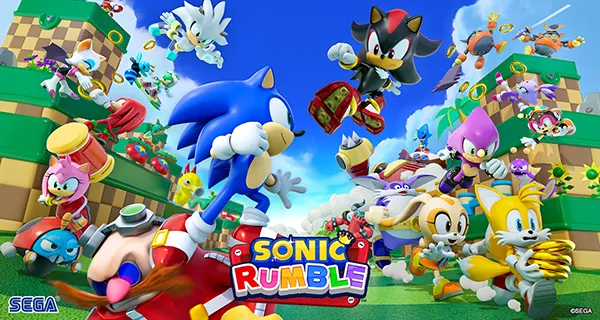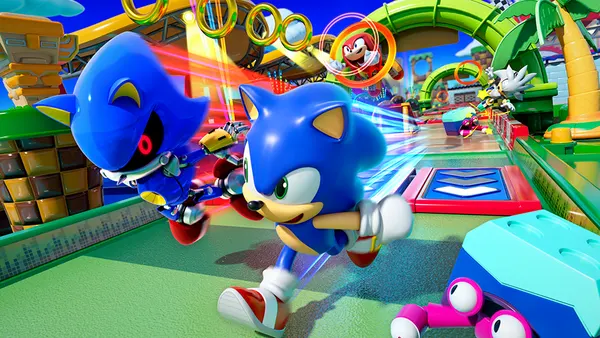
Sonic Rumble — the Party Battle with Mischievous Sonics
Sonic Rumble is a fresh take on multiplayer mobile gaming that throws players into chaotic battles with dozens of tiny, mischievous Sonics. Released in 2024 by Sega and still highly popular in 2025, the game combines the colourful charm of the Sonic universe with the competitive mechanics of modern party-battle titles. Players are placed in arenas where they compete against each other through rounds of survival, racing, and obstacle-based challenges. The dynamic pace, coupled with Sega’s unmistakable design, makes it one of the most notable multiplayer releases on mobile in recent years.
Gameplay Concept
At its core, Sonic Rumble is about quick reaction times and adaptability. Each round introduces new obstacles and shifting mechanics, ensuring no two matches feel identical. Players must not only focus on speed but also balance, as the stages often contain tricky traps designed to knock participants out of the competition. The shrinking pool of challengers in each stage raises the stakes and keeps tension high.
Characters are presented as miniature, toy-like versions of Sonic and his friends, adding a playful edge that stands apart from other Sonic games. Unlike traditional Sonic titles that focus on platforming or racing, Sonic Rumble embraces the unpredictability of competitive party matches. This direction reflects Sega’s ambition to expand Sonic into diverse gaming genres without losing the brand’s recognisable energy.
Accessibility has been a major strength of the game. The controls are streamlined for touch devices, meaning newcomers can join without feeling overwhelmed. At the same time, seasoned players can master the mechanics of timing jumps, leveraging power-ups, and blocking rivals to secure an advantage in chaotic rounds.
Game Modes and Variety
The developers structured Sonic Rumble around short but intense match cycles, each consisting of multiple rounds. Modes range from simple races to more elaborate obstacle courses where collaboration and sabotage play equal roles. The design borrows cues from popular party-battle formats but incorporates Sonic’s identity through speed-focused gameplay and vibrant stage aesthetics.
Boss rounds and themed challenges add further variety, ensuring that repetition does not set in. These modes often require teamwork or present randomised mechanics, pushing players to adapt quickly. The emphasis on unpredictability ensures players remain engaged match after match, an essential element for long-term replayability.
In 2025, Sega has continued to introduce seasonal events, cosmetic unlocks, and new stage types. This ongoing support has kept the community active and created a competitive ecosystem that remains strong long after the initial release.
Visual Style and Design
The art style is deliberately playful, leaning into the idea of toy-sized characters in larger-than-life environments. The levels are built to resemble colourful dioramas, giving each match a lively and almost board game-like feel. This design decision not only appeals to younger audiences but also evokes nostalgia for long-time Sonic fans who appreciate the franchise’s quirky side.
Attention to detail is evident in the animation work. Each character’s movement, from clumsy tumbles to exaggerated victory poses, adds humour and personality. The expressive animations create a sense of charm even when players fail in the middle of an obstacle, softening the frustration of elimination.
On the technical side, the game runs smoothly on both iOS and Android devices, which is critical for fast-paced multiplayer sessions. Sega has ensured that even on mid-range smartphones, the visuals and performance remain stable. This optimisation has widened the game’s accessibility across global markets, especially in regions where budget devices dominate.
Customisation Options
A large part of Sonic Rumble’s appeal lies in its extensive character customisation. Players can equip different costumes, accessories, and emotes to personalise their tiny Sonic avatars. These items are often tied to in-game achievements or seasonal updates, encouraging consistent play to unlock exclusive rewards.
The cosmetic system reflects Sega’s approach to monetisation, where purchases focus on appearance rather than gameplay advantages. This keeps the competition fair and prevents pay-to-win dynamics that might otherwise damage the game’s credibility. Instead, the emphasis is on fun, individuality, and community expression.
Collaborations with other Sega properties have also been introduced, adding cross-franchise outfits and accessories. This strategy has broadened the game’s appeal beyond Sonic fans and created a shared universe of Sega-inspired collectibles.

Community and Competitive Play
By 2025, Sonic Rumble has built a strong global community of casual players and competitive enthusiasts. The game encourages social play through team-based events, friend challenges, and online leaderboards. Community-driven tournaments, often streamed live, have also become a central part of the game’s ecosystem, showcasing high-level strategies and memorable match highlights.
Social interaction is another key component. Players can form groups, send quick in-game messages, and celebrate wins with expressive animations. These features make Sonic Rumble feel less like a solitary mobile experience and more like an interactive digital playground where community bonds strengthen gameplay engagement.
Crossplay support between mobile devices ensures that the player base remains unified, preventing fragmentation and guaranteeing faster matchmaking. Sega’s investment in server stability and anti-cheat measures has also helped maintain fair competition, an essential factor for sustaining long-term trust among players.
Future Outlook
Looking ahead, Sega plans to expand Sonic Rumble with new game modes, experimental maps, and limited-time challenges. The developer’s strategy is to keep content rolling out consistently, ensuring that the game remains relevant in a highly competitive mobile market. This constant flow of updates signals Sega’s long-term commitment to the title.
Industry analysts suggest that Sonic Rumble could serve as a blueprint for how legacy franchises can thrive on mobile devices while appealing to new generations. By merging nostalgic elements with modern mechanics, Sega has effectively refreshed Sonic for a different audience.
With continued developer support, a dedicated fanbase, and a thriving competitive scene, Sonic Rumble is likely to remain one of the standout mobile multiplayer games of 2025. It successfully balances accessibility, humour, and intensity, offering a model of how classic characters can be reimagined for contemporary mobile gaming culture.
